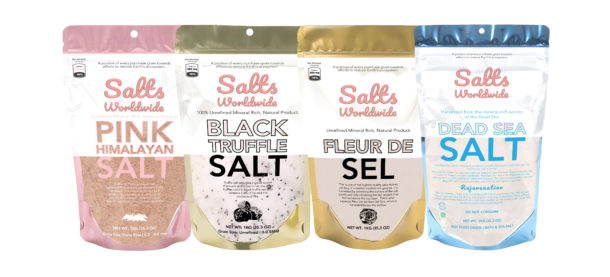You might have heard about fleur de sel salt being used to season fish and other seafood. This product has long been recognized as a hallmark of culinary achievement among chefs and food lovers. It involves collecting the thin white layer of sodium-salt crystals that rises to the top of shallow coastal pools of France, mostly but not exclusively on the coasts of Brittany. Fleur de sel is usually prepared with fresh fish or meat and a variety of vegetables, as well as bread or pastry ingredients. But in recent years it has been increasingly used as a cooking ingredient for a wide range of cuisines.
The distinctive fleur de sel crystals form as a result of high temperatures rising to the boiling point of the water in coastal waters. When this occurs, the sodium-based crystals separate from the relatively pure sodium chloride. They are then released into the air where they become moist – and very delicious. Because of this, fleur de sel also goes by the name of “sea salt” or “freshwater salt.”
Fresh fish are rubbed or brushed with fleur de sel, to prepare them for consumption. It’s often combined with other ingredients and served on grilled sandwiches. It is also mixed with ordinary sea salt to make a light, fresh sensation in salty snacks and pastries. It’s a popular additive to canned fruit, particularly pears. And sea salt is the preferred cooking component for preparing breads and rolls, as well as for sprinkling on tomatoes and other fruits and vegetables.
Fleur de sels come in many forms. One of the most traditional forms is the flat fleur de sel that bears a striking resemblance to a fleur de lis symbolizing strength and victory. This salt is available in various grains and is sometimes mixed with rice flour to make it less sticky. This flat fleur de sel is most commonly used as a decorative finishing salt on table salt and is now enjoying a renaissance in popularity in culinary circles.
Fleur de sels can also be sold in tablet form. These tablets are manufactured with a proprietary blend of minerals and other ingredients that provide fleur de sel with its extraordinary crunch. This salty alternative to table salt creates a soft yet rich crunch that is favored by many chefs for its melt-in-your-mouth texture.
Other fleur de sel salts can be purchased in bulk. In addition to being used as a fleur de sel there are several varieties of fleur de sel that have multiple applications including as a high pressure sodium bleach for use in the food industry, a salt for fish and seafood curing, a salt substitute for ketchup and mustard as well as an absorbent for paper products. Many specialty stores also carry this finishing salt in its dried form. Fleur de sels are now being packaged in convenient dried flakes that make them ideal for fleur de lis kits as well as saltine crackers and cookies.
Dried fleur de sels are excellent for simmering soups and stews because of their delicate flavor. They have the ability to maintain the structure and elasticity of the stems while retaining the moisture content they had when they were fresh. This allows them to retain much more of their original flavor than when they were fresh. When using fleur de sel for fish and seafood applications, choose ones that are relatively free of sulfates. Although they have a slight salty taste, they are still quite delicate and will not overwhelm the delicate flavor of the fish or seafood.
There are many recipes today that feature fleur de sel because of its delicate flavor. When using fleur de sel as a fleur de lis base, remember that the flavor can be altered by adding a pinch of kosher salt. Many people also use fleur de sel in glazing or dipping sauce for fish, seafood, and chicken. For this reason it is widely available in most stores as a table salt, in shaker packets and as a salt substitute.


Recent Comments